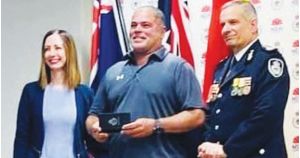As I get older, I find the smaller size of miniature neoregelias more appealing for their ease of handling. Plus, mini neoregelia have such a lot going for them. Not only are they cute and colourful but are fairly easy to grow and propagate. They can be grown in hanging baskets (if there is a space shortage) and, because of their smaller size, they are very suitable for unit balconies, town houses and retirement villages.
There are so many hybrids minis with vibrant colours available these days that we are spoilt for choice on what to collect but my favourites are still in the older varieties and I have found they tend to be more stable with their colours and markings.
I leave most of my stoloniferous (long stemmed) plants to grow and multiply in their pots or baskets. These types are also great for tying to trees or creating displays on pieces of wood. Some of my favourites are Chiquita Linda, Night Spot, Cayenne, Midget, Ritzy, Small Fry a neo can quite happily grow without a potting medium. Many grow in the wild by attaching their roots to trees and relying on moisture and rotten leaf litter for their.
The short stoloniferous minis are better grown in pots and as single specimens. That way they form a nice even rosette formation. I find pups from these are better taken off as soon as they reach about a third of the size of the mum so you can keep the even growth of leaves and avoid elongated leaves. Some examples with these are Little Faith, Pheasant, Shamrock and Mini Skirt.
My “love affair” with these little beauties is such that I have phased out my collection of medium to large bromeliads and now concentrate on growing miniatures only. They are attractive in shape and have brilliance in colour, all of what you would get in the larger bromeliads but in a compact size that is easier to handle.
For more information regarding the Bromeliad Society of Australia – contact Ian Hook, President on mobile 0408 202 269 or email [email protected].









